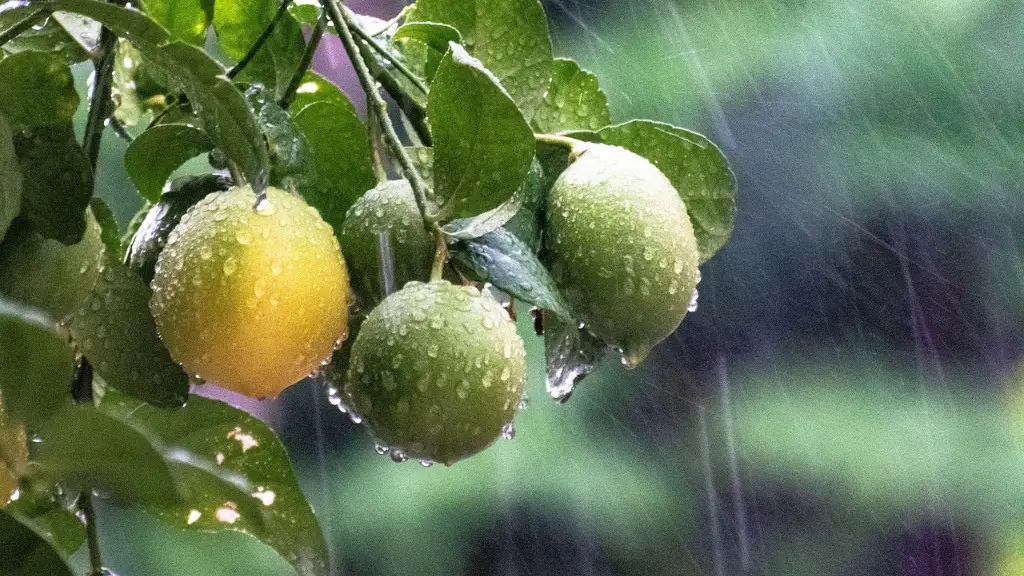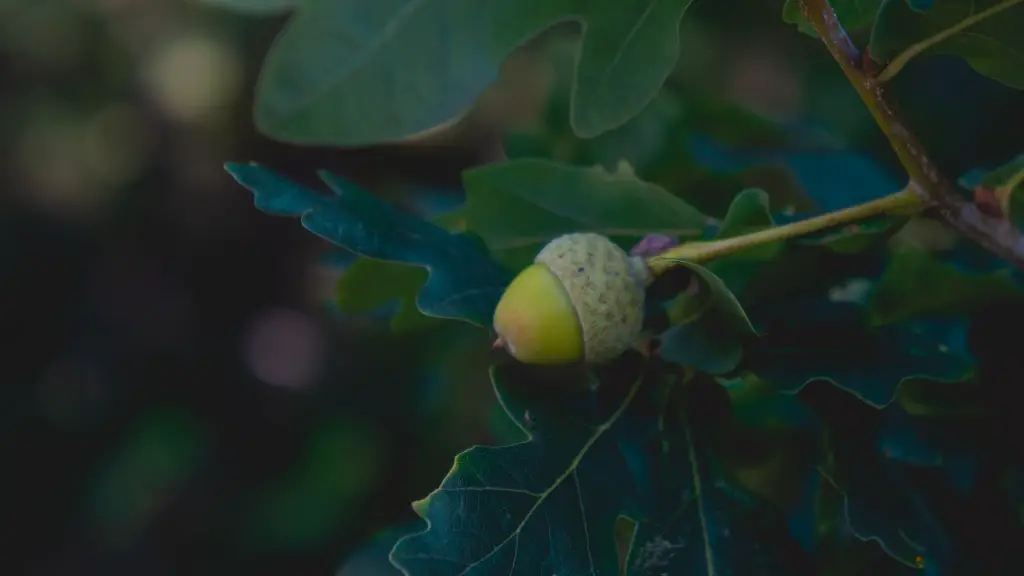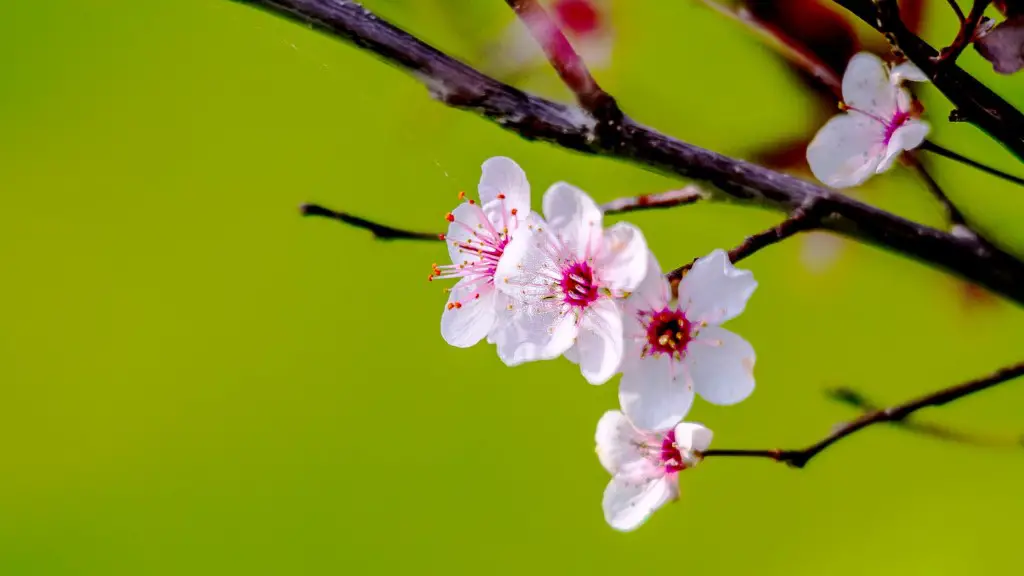Growing your own lemon tree is a rewarding and exciting experience. To get the best results when planting a lemon tree, it’s important to select potting mix for its growing medium. Many gardeners and citrus enthusiasts select a sandy loam soil with a high drainage rate. If you’re preparing the soil from home, blend it with leaf compost, sand and mulch to ensure highly porous and well-draining soil. Additionally, adding in perlite or a wetting agent can help to improve its drainage rate even further.
A lemon tree will require regular pruning and cultivation to maintain its growth rate and fruiting potential. To do this, you’ll need to pick a pot that’s large enough to support its growth, as well as one with plenty of drainage holes or air pockets in the bottom. Terracotta pots offer the best porosity and drainage, though wooden and plastic containers can also be used. When selecting plastic or wooden containers, make sure they have good drainage holes, or they may become water-logged.
Once you’ve picked the best potting mix and container, you’ll need to consider your lemon tree’s placement. Contrary to what many believe, lemon trees actually require sunlight in order to develop fruit and thrive. To get the best results, you should select a location that gets plenty of indirect sunlight, can be sheltered from strong winds, and is away from harsh frost or extreme cold. Additionally, check the soil around the area to ensure it has the correct pH for fruiting to occur.
When your lemon tree arrives, it’s important to adequately hydrate and nurture it. This will help to ensure that the tree has the best chance of surviving and thriving in its new environment. Check the root system and give the tree a generous drink from a watering can with a fine spray of lukewarm water. Monitor the tree regularly, but avoid overwatering it as this can cause root rot and other problems.
Fertilising, unlike watering, should be done sparingly. As with all citrus trees, your lemon tree needs a blend of nitrogen, potassium and phosphorus in order to grow and mature fully. If you’re growing your tree in a container, you can use a balanced 5-10-10 liquid-based fertiliser according to instructions on the label. When the leaves begin to yellow, this indicates the tree needs additional nutrients and fertilizer should be administered promptly.
Direct Sunlight
When it comes to a lemon tree, one of the most important aspects of growth is direct sunlight. Providing the tree with the right amount and type of sunlight can help to optimize its health and productivity. The best time of day to allow light to reach the lemon tree is during the morning and afternoon hours. During this time, direct sunlight should be allowed to shine on the tree for several hours; however, when the temperatures become extreme, you should provide indirect light to your tree. This can be done by adding a shade cloth or other protective shade to the tree, or by moving it elsewhere.
In addition to providing direct and indirect sunlight, you should also ensure that the temperature surrounding your lemon tree is within the optimal range. Ideal temperatures should always be over ten degrees Celsius and not exceed thirty degrees Celsius. In case temperatures drop too low, it’s always best to provide your tree with extra warmth through heat lamps or a hydroponic grow system.
It’s also important to keep an eye on the humidity levels around your tree. During the summer months, when temperatures get extremely high, it’s best to increase the humidity level around your tree to help it stay healthy. Easily-accessible humidifiers or misting systems can be used to get the best results.
Irrigation
In order to achieve the best results, proper irrigation techniques must be employed. When watering your lemon tree, it’s important to use lukewarm water to ensure the tree absorbs the nutrients quickly. Water the potting mix until it’s completely saturated and take the time to check the drainage holes when finished. Additionally, make sure that the soil around the tree is never allowed to dry out or become water-logged. You may do this by checking the moisture levels of the soil using a gardening trowel.
Be sure to avoid waterlogging the soil by using a potting mix with a high drainage rate, as well as by adding some perlite or a wetting agent to the mix. If you’re growing your lemon tree in a container, check it regularly for signs of waterlogging. If the water begins to pool on the surface of the pot or underneath the root system, this is an indicator of too much water being retained in the soil.
It’s also important to monitor the salts levels of the soil around the lemon tree. To do this, you should measure both the electrical conductivity and pH of your soil. If salts are present in the soil, this is an indicator the soil needs drained and refilled with a fresh potting mix.
If you’re using a hydroponic grow system for your lemon tree, it’s important to monitor the nutrient mixture and add additional nutrients as needed. A nutrient blend contains nitrogen, phosphorus and potassium, as well as other necessary minerals. Check the intensity of the nutrient solution periodically to make sure it’s properly balanced, and adjust accordingly if it’s too concentrated.
Pruning and Cultivation
As your lemon tree begins to growth, it’s important to prune and cultivate it regularly. Pruning helps to shape the tree and keep it healthy, while cultivation helps to aerate the soil, improve drainage and eradicate weeds. Pruning can also help to keep the tree’s growth in check and prevent it from becoming overgrown.
When pruning, it’s always best to remove dead, diseased or damaged limbs as soon as possible. Additionally, remove any weak or sickly looking branches, and prune off any fruit that has been damaged. To help the tree form a strong fruit bud, remove one-third of a mature tree’s older and bigger branches per pruning session, and always avoid over-pruning.
When cultivating, use a hoe and cultivator to loosen the soil around the tree and allow for more oxygen to flow through. Additionally, check the soil for any weeds or pests, and take the time to supplement the tree’s soil with a slow-release fertilizer. If you’re growing a lemon tree in a container, apply a controlled-release fertilizer about once every three months to ensure it’s properly nourished.
Transplanting
If you plan to transplant your lemon tree, it’s important to take the time to prepare it carefully. When you’re ready to transplant the tree, start by trimming the branches and root system lightly to reduce the amount of stress it undergoes. Once the tree has been trimmed, place it carefully in its new pot, and fill this pot with potting mix and nutrient-rich soil. Use a trowel to remove any air pockets in the soil and provide your tree with enough room to spread its root system.
When transplanting a lemon tree, it’s imperative to water it immediately after the planting process. This will help to lessen the amount of shock the tree will undergo as it adjusts to its new environment. Additionally, provide the tree with plenty of sunlight and water, and cover the soil with a layer of mulch or compost to help to retain moisture. If you’re still looking to provide extra warmth and light, you can also use additional hydroponic or heat lamps.
If you’re transplanting in the colder months, it’s best to keep an extra layer of insulation on the tree, such as a sheet of insulated plastic. This helps to protect the roots and stem from extreme temperatures, and will allow the tree to become more established. Once the tree has gone through its transplanting process and has established itself, you can begin to water it more heavily and start its regular pruning routine.
Pest Control
It’s important to remember that along with providing a suitable environment for your lemon tree to thrive, you must also take the necessary steps to protect it from pests. Insects such as aphids, mealybugs and mites are common enemies of citrus trees; however, they can be easily eradicated with the use of soap solutions, horticultural oils or pyrethrins. Additionally, you can choose to use natural predators such as ladybugs, green lacewings or predatory mites to help control the spread of pests.
When it comes to keeping your lemon tree free from diseases, the best line of defense is to regularly check the tree and its leaves. Inspect the trunk, branches and leaves regularly, and make sure to prune away any dead or damaged limbs as soon as possible. Additionally, look for any signs of sooty mold, rust or scab, as these are common signs of diseases. If you find any signs of infections or diseases, treat them immediately with the appropriate fungicidal sprays or solutions.
If you follow all the above instructions, you should have no problems when planting and nurturing your very own lemon tree. Additionally, always remember to provide it with enough love, light and water for a healthy, productive and thriving citrus tree.


